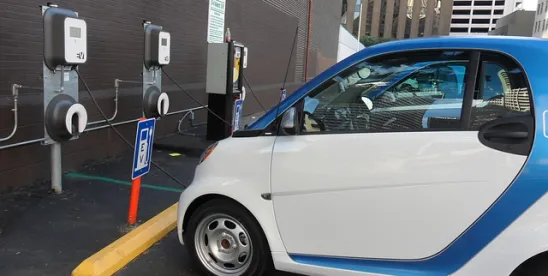Turbulence in global fuel economy standards are putting new pressures on the automotive industry to shift its thinking on gasoline and electrification. In late July, the National Highway Traffic Safety Administration (NHTSA) formally announced its upcoming reevaluation of Corporate Average Fuel Economy (CAFE) standards for 2022-2025. Since the 1970s, NHTSA has been setting fuel economy requirements for cars sold in the U.S. in order to promote improving fuel efficiency in response to the OPEC Oil Embargo. Under the current standards, each automaker is expected to reach a fuel economy of 54.5 MPG across all of its vehicles sold, which represents a rapid increase of fuel economy standards starting in 2011 (standards had been mostly unchanged over the preceding two decades).
However, even if the aggressive CAFE targets for 2025 are rolled back in the U.S., much of the world has doubled down on setting a deadline for replacing gas with electric altogether. In a global automotive manufacturing market, any rollback of standards in the U.S. is unlikely to have much of an impact on easing regulatory burdens on automakers, who still have to meet rising fuel economy standards outside the U.S. Just as California’s has held U.S. automakers to higher standards than the federal regulators, so too will foreign countries.
With Britain joining France in its commitment to banning gas and diesel automobiles by 2040, this proclamations still raises questions for what the fuel economy standards will be the intervening 23 years. Assuming that global fuel economy standards will continue to rise regardless of U.S. regulatory action, several manufacturers have focused efforts outside of electrification, helping the internal combustion engine to fight back against an otherwise likely death.
Compression ignition, long the technology powering diesel engines, is finally finding its way into traditional gasoline-powered engines and replacing the traditional spark plug. While diesel engines are known for their fuel efficiency, some manufacturers face emissions challenges as highlighted in the ongoing EPA scandal. However, recent advances by the likes of Mazda promise 20-30% increases in efficiency over their current stock of already frugal engines. Compression ignition also increases power output and reduces the harmful NOx emissions that plague diesel.
Similarly to Mazda, Achates Power, a company based out of San Diego, has been developing its own compression ignition engine with opposed pistons. The company already claims that they have developed a pickup truck engine that will achieve 37 MPG, exceeding the 33 MPG CAFE requirement for pickup trucks in 2025. Achates has even announced partnerships with several OEMs to bring its engines to market, and is even expecting to have its engine ready for vehicle testing this year.
While a transition to electric vehicles seems inevitable, it will certainly not be instantaneous. The average length of car ownership alone suggests that electric vehicles will see at least a 10-year lag until they proliferate fully into the used car market. However, signs are starting to pop up about alternatives that may either bridge the gap to full electrification or may eventually supplement electric cars in some situations. With these recent innovations, the internal combustion engine may still be around for decades to come.



 />i
/>i

